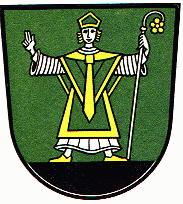Middle Ages
The first written record of Hadeln is found at the end of the 10th century in the Saxon tribal chronicle (Stammessage) by Widukind of Corvey. In other medieval chronicles, the area "where the ocean rinses Saxony" ("wo der Ozean Sachsen bespült") is called Haduloha or Hatheleria. In 797 AD, Charlemagne is supposed to have advanced to Hadeln during a campaign against the Saxons and Frisians.
During the Viking invasions of the 9th to 11th centuries, Hadeln was part of the County of Lesum. In the 10th century, the Udonids established the County of Heilangau, better known under its later name the County of Stade. In 1063, the Udones sold their imperial immediacy to the Archbishopric of Bremen, but remained, as their vassals, still the direct rulers of the county. Around 1100, the development of the marshland in accordance with Holler rights (Hollerrecht) began. With the increase in cultural land and population, Hadeln was separated from the County of Stade as a county in its own right, and became an object of contention, following the death of Count Rudolph II, between Archbishop Hartwig I of Bremen and Henry the Lion, who initially prevailed. After the disagreement of the Welf duke with Frederick Barbarossa and his deposition by the Emperor, the Emperor granted the ducal rights for eastern Saxony to the Ascanians. In Henry's time, the Archbishop of Bremen was allied to Hartwig II. After the death of Henry the Lion's son, Henry V, the County of Stade returned to the Archbishopric. The self-government of Hadeln, under Schultheißen and Schöffen, had become stronger and accepted the Ascanian, Duke Bernard III as ruler in 1210/11.
After that, the state of Hadeln formed a largely independent farmers' republic under the loose overlordship of the dukes of Saxe-Lauenburg. With each change of ruler, the people of Hadeln had their liberties and privileges reaffirmed at the Warningsacker (a legal meeting place) between Otterndorf and Altenbruch. In contrast with the neighbouring state of Wursten, the abbey of Neuenwalde and local aristocratic families were also able to own land within the state, without gaining any major political influence over it.
After Schloss Ritzebüttel had changed hands from the Lappe family to Hamburg in 1393, the influence of the Hanseatic city began to take hold with the foundation of the district of Amt Ritzebüttel. (today Cuxhaven) in 1394 in the land of Hadeln. In Otterndorf, which had been granted its town charter in 1400 and where a Latin school was established early on, the citizens of Hamburg helped rebuild the castle, which had previously been destroyed by the Archbishop of Bremen, and from 1407 to 1481 the land was even a fief of Hamburg. However, when the Hamburgers tried to monopolise wheat exports, a rebellion broke out in 1456. After the conflict ended in a stalemate, a lasting compromise was finally reached between the powers of the lordly Amtmann or count in Otterndorf and the otherwise independent authorities of the Hadler estates (Hadler Stände).


